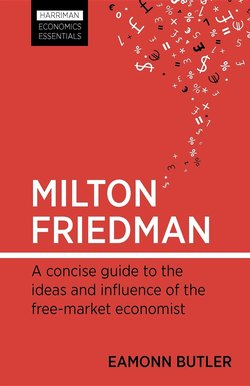Читать книгу Milton Friedman - Eamonn Butler - Страница 16
На сайте Литреса книга снята с продажи.
The wartime Keynesian
ОглавлениеYet at this time, Friedman was – like everyone – a Keynesian. After a short teaching stint and a period at the National Bureau of Economic Research doing research with Simon Kuznets on professional incomes, Friedman returned to Washington in 1942 to undertake wartime work on tax policy for the US Treasury. He even worked on Keynes’s idea of raising taxes to combat inflation, testified to Congress in support of it, and co-authored a 1943 paper on the subject, Taxing to Prevent Inflation.
Years later, Friedman would come to support almost any cut in taxes, famously rejecting the notion that tax rises could affect inflation: only changes in the supply of money, he insisted, could do that. But he had yet to develop these groundbreaking ideas: indeed, he never even mentioned money in his 1942 testimony.
“I am in favour of cutting taxes under any circumstances and for any excuse, for any reason, whenever it’s possible.”
– Milton Friedman, interview with John Hawkins (2003)
Friedman spent the rest of the Second World War in Columbia University’s Statistical Research Group, where he and colleagues developed a statistical technique known as sequential analysis. It still remains one of the key tools in quality control experiments, such as the clinical trials of new pharmaceuticals. Only after the war did he begin to strike out as a radical and controversial economic thinker.
